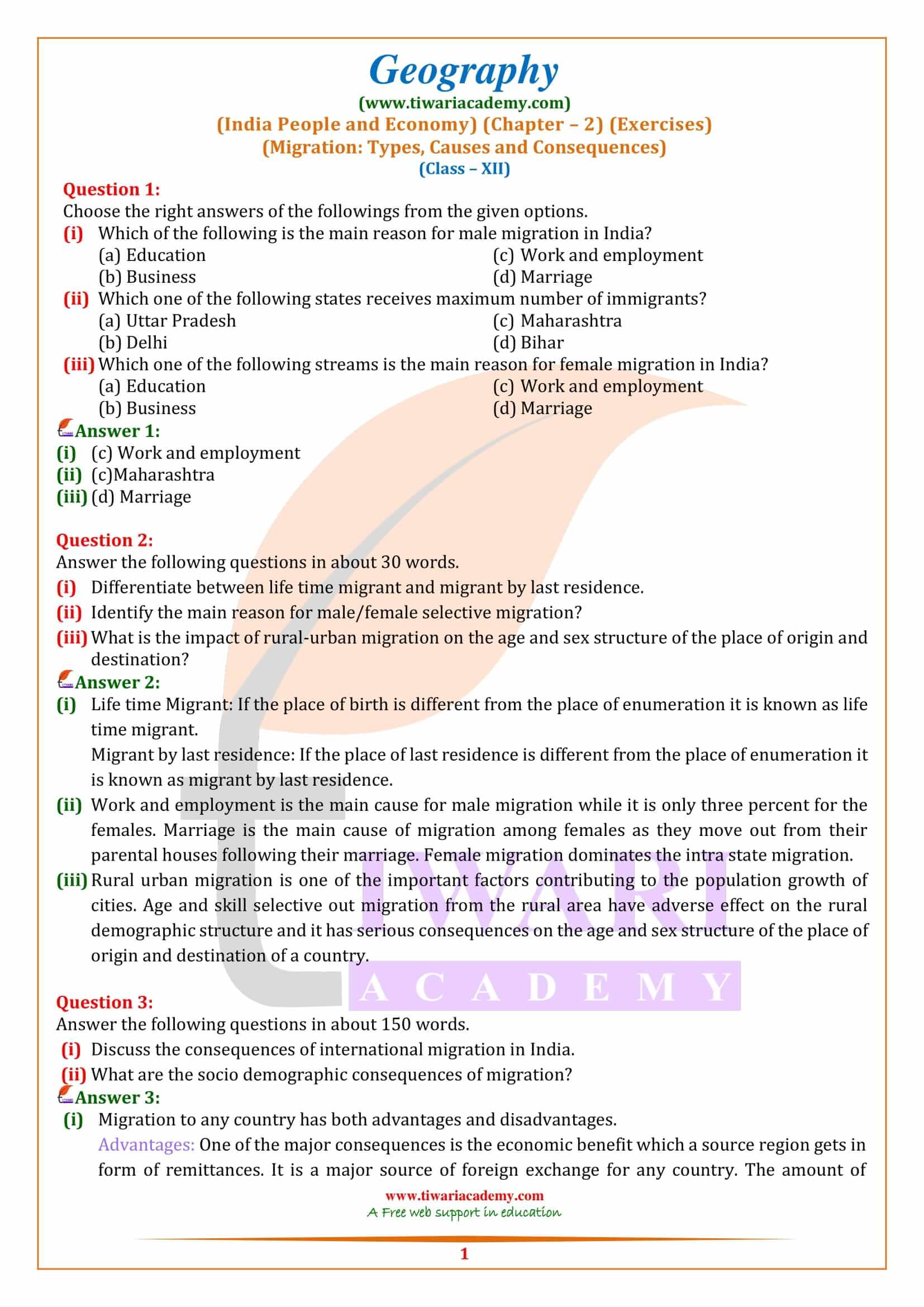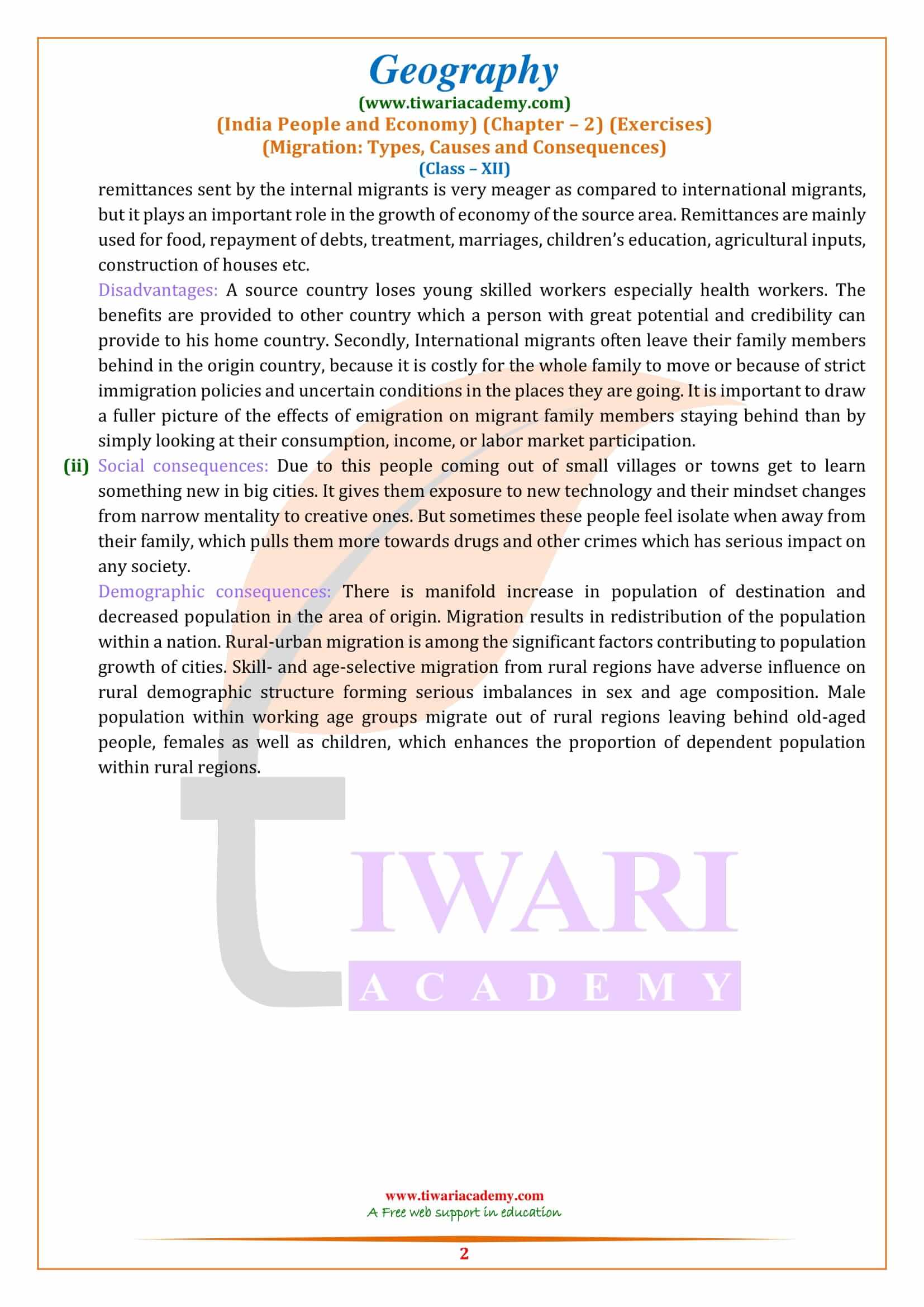NCERT Solutions for Class 12 Geography Chapter 2 Migration Types, Causes and Consequences in Hindi and English Medium updated for CBSE session 2025-26. Class 12 Geography chapter 2 questions answers of India People and Economy Unit I are given here in simple format.
NCERT Solutions for Class 12 Geography Chapter 2
Class 12 Geography Chapter 2 Migration Types Question Answers
Differentiate between life time migrant and migrant by last residence.
Life time Migrant: If the place of birth is different from the place of enumeration it is known as life time migrant.
Migrant by last residence: If the place of last residence is different from the place of enumeration it is known as migrant by last residence.
Identify the main reason for male/female selective migration?
Work and employment is the main cause for male migration while it is only three percent for the females. Marriage is the main cause of migration among females as they move out from their parental houses following their marriage. Female migration dominates the intra state migration.
What is the impact of rural-urban migration on the age and sex structure of the place of origin and destination?
Rural urban migration is one of the important factors contributing to the population growth of cities. Age and skill selective out migration from the rural area have adverse effect on the rural demographic structure and it has serious consequences on the age and sex structure of the place of origin and destination of a country.
Class 12 Geography Chapter 2 MCQ
Which of the following is the main reason for male migration in India?
Which one of the following states receives maximum number of immigrants?
Which one of the following streams is the main reason for female migration in India?
Discuss the consequences of international migration in India.
Migration to any country has both advantages and disadvantages.
Advantages: One of the major consequences is the economic benefit which a source region gets in form of remittances. It is a major source of foreign exchange for any country. The amount of remittances sent by the internal migrants is very meager as compared to international migrants, but it plays an important role in the growth of economy of the source area. Remittances are mainly used for food, repayment of debts, treatment, marriages, children’s education, agricultural inputs, construction of houses etc.
Disadvantages
A source country loses young skilled workers especially health workers. The benefits are provided to other country which a person with great potential and credibility can provide to his home country. Secondly, International migrants often leave their family members behind in the origin country, because it is costly for the whole family to move or because of strict immigration policies and uncertain conditions in the places they are going. It is important to draw a fuller picture of the effects of emigration on migrant family members staying behind than by simply looking at their consumption, income, or labor market participation.
What are the socio demographic consequences of migration?
Social consequences: Due to this people coming out of small villages or towns get to learn something new in big cities. It gives them exposure to new technology and their mindset changes from narrow mentality to creative ones. But sometimes these people feel isolate when away from their family, which pulls them more towards drugs and other crimes which has serious impact on any society.
Demographic consequences: There is manifold increase in population of destination and decreased population in the area of origin. Migration results in redistribution of the population within a nation. Rural-urban migration is among the significant factors contributing to population growth of cities. Skill- and age-selective migration from rural regions have adverse influence on rural demographic structure forming serious imbalances in sex and age composition.
Male population within working age groups migrate out of rural regions leaving behind old-aged people, females as well as children, which enhances the proportion of dependent population within rural regions.



